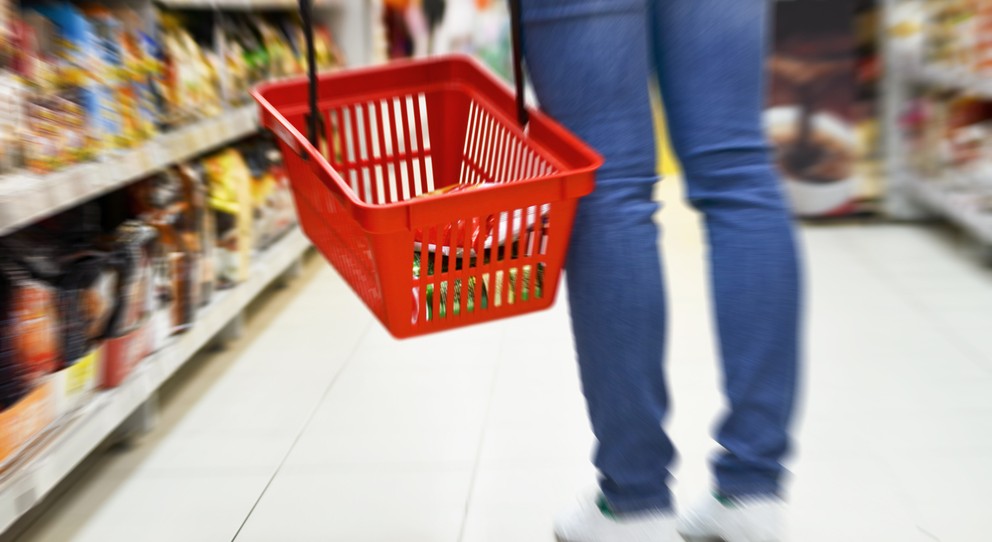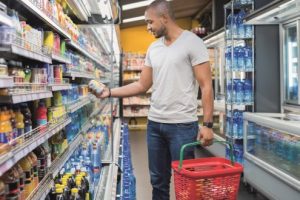The decline was just 0.5% in the four weeks to 8 August when consumers made an extra 108,000 shopping trips but the average basket size was 10% smaller as pre-pandemic buying habits returned.
The new figures also reveal that cash is being used less often than ever in major retailers and the nature of online shopping is changing with a sharp drop in business in the latest period as more consumers decided to make their purchases in stores once again.
Fraser McKevitt, head of retail and consumer insight at Kantar, said: “We are reaching some point of market stabilisation because we are not too far from where we were at this point last year but people are now more confident to go out shopping.
“With the end of social distancing restrictions, people have been happier to head into stores to make more regular, smaller shops.
“Take up of online grocery shopping grew rapidly during the pandemic, but as lockdown restrictions have loosened a divide is beginning to emerge.
“Those who have come to love the convenience of an online shop are sticking with it, ordering regularly and spending on average more than two-thirds of their total grocery bill online.
“The unconverted are starting to drop away, preferring to get back to store instead. Just over 20% of the population bought groceries online in the latest four weeks – the lowest level we’ve seen since October last year.”
The online share of grocery sales now stands at 13% – down from a peak of 15.4% in February.
This shift away from online contributed to Ocado’s sales falling by 0.7% – its first decline on record.
“Ocado’s growth is now comparing against the rapid expansion it enjoyed in 2020 so it’s not altogether surprising that we’re now seeing a small dip. It’s still a positive outlook for the online specialist though.
“If there’s one pandemic habit that has stuck it is perhaps that cash-free payment is now king. Across major grocery retailers, 87% of payments are now made by card rather than with cash.
“As we shift to cashless payment methods, retailers have been looking to make purchasing as seamless as possible.
“Amazon launched its ‘just walk out’ stores while Tesco is preparing to introduce its first till-less shop and we anticipate more retailers will follow suit.
“This approach works for retailers and shoppers so we are not going to go back to where we were in terms of using cash.”
Like-for-like grocery prices have been falling since April and the trend continued over the latest 12-week period with a drop of 0.8%. However, inflation increased by 0.4% in the four-week period and this could be a sign of things to come.
“Although relatively low, this four-week level of inflation would still add £19 to the annual grocery bill. It’s expected that inflation will rise again in the coming months, and as a result we’ll likely see shoppers seeking to tighten the purse strings.”
Symbols and independents saw their share of sales decline between 2020 and 2021, going from 2.2% to 1.8% .
Tesco’s share of grocery sales increased from 26.6% to 27.2%, its largest year-on-year share gain since 2007.
Waitrose was the only grocer to increase sales in the past 12 weeks, with growth of 0.6% as it attracted 365,000 more shoppers than it did last year.
Sainsbury’s share also edged up slightly to give it 15.2% of the market.
Asda saw a 17% jump in the number of shopping trips compared with last year and now accounts for 14.2% of grocery sales.
Morrisons share dipped to 10%, with sales falling by 6.2% being measured against a strong performance last year.
Discount retailers Aldi and Lidl both gained market share once again.
Co-op and Iceland, two of the standout performers of the past 18 months, saw sales fall year-on-year and now have market shares of 6.6% and 2.3% respectively.
 Talking Retail Grocery and product news for independent retailers
Talking Retail Grocery and product news for independent retailers






